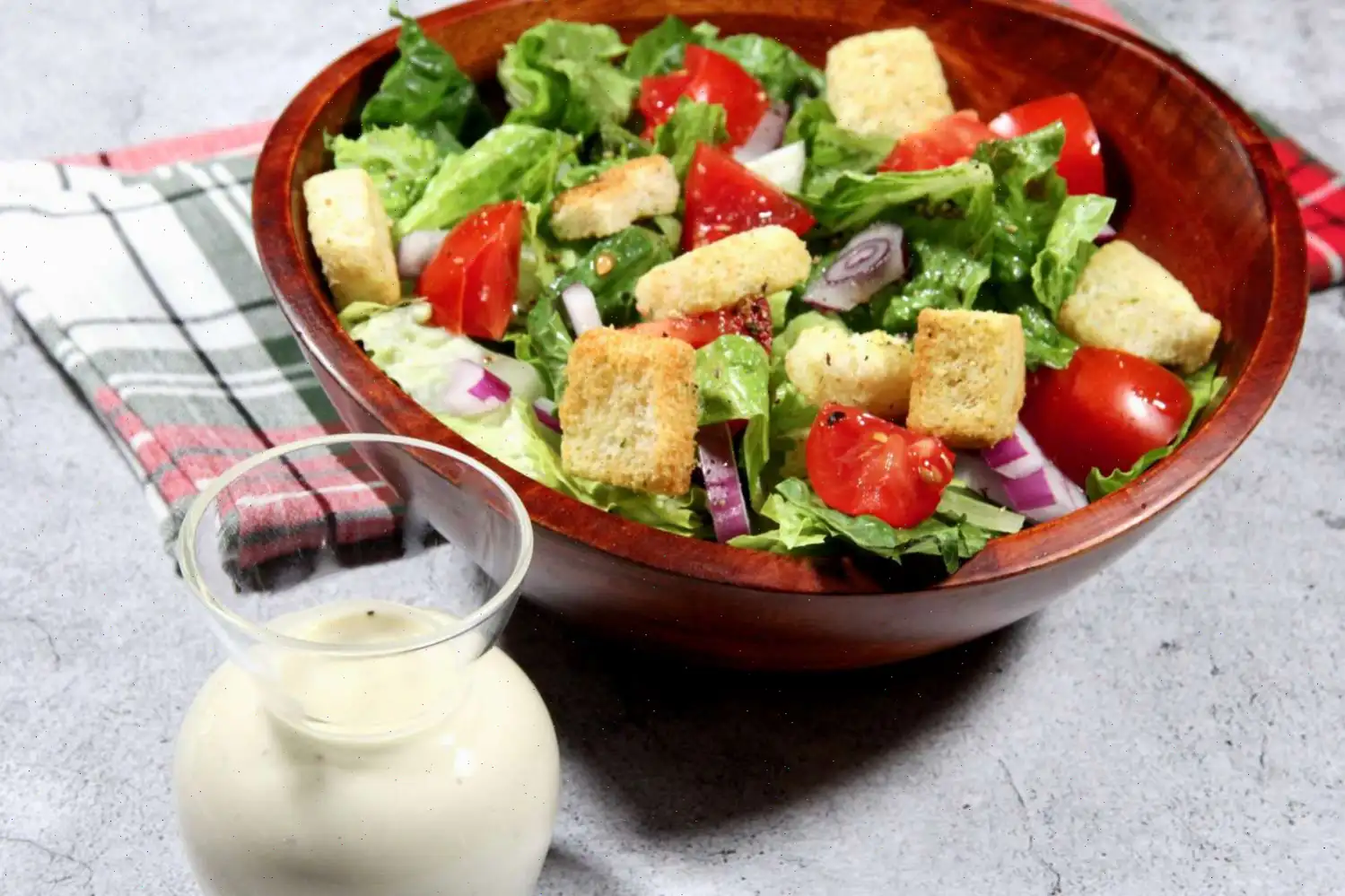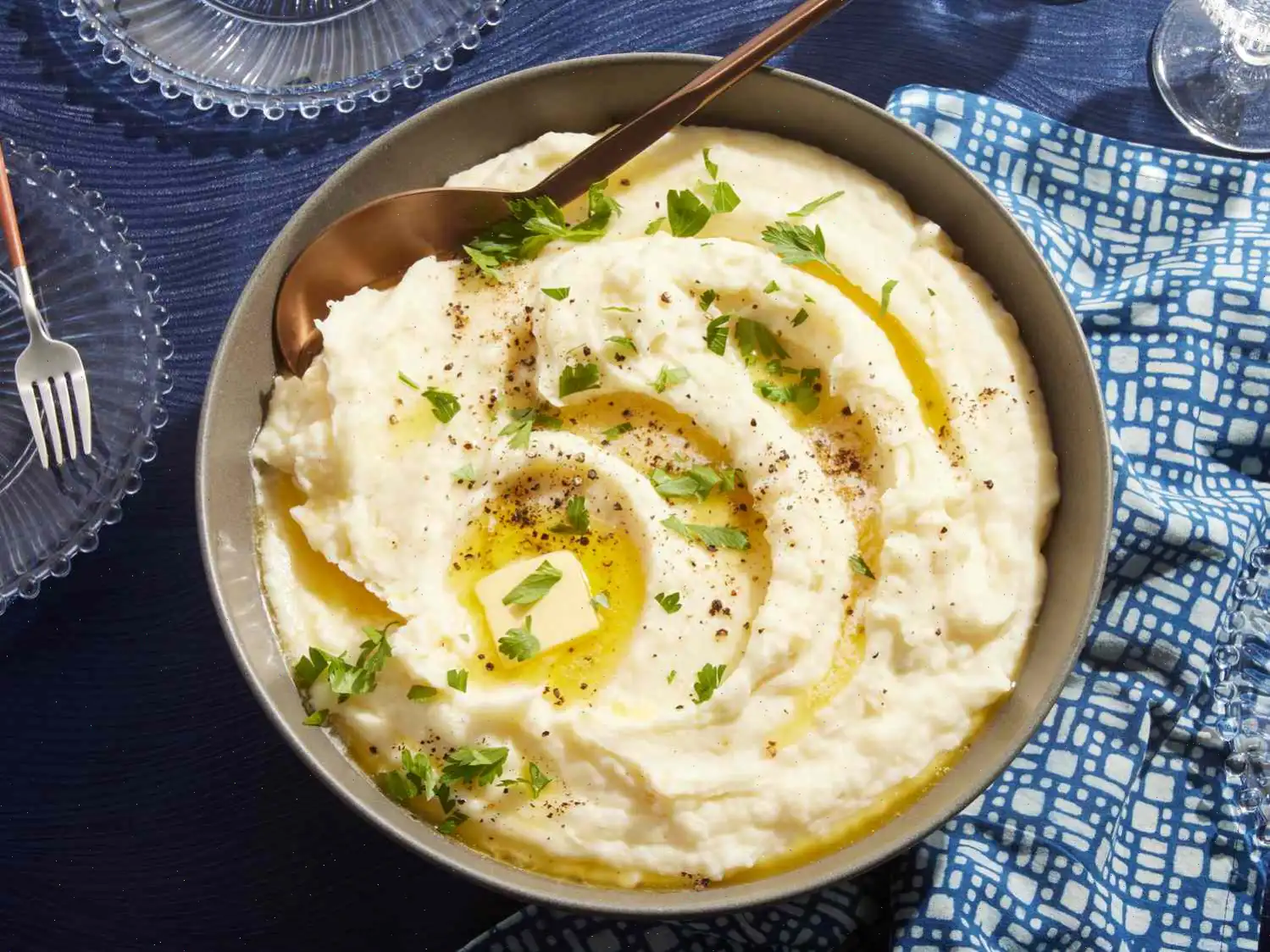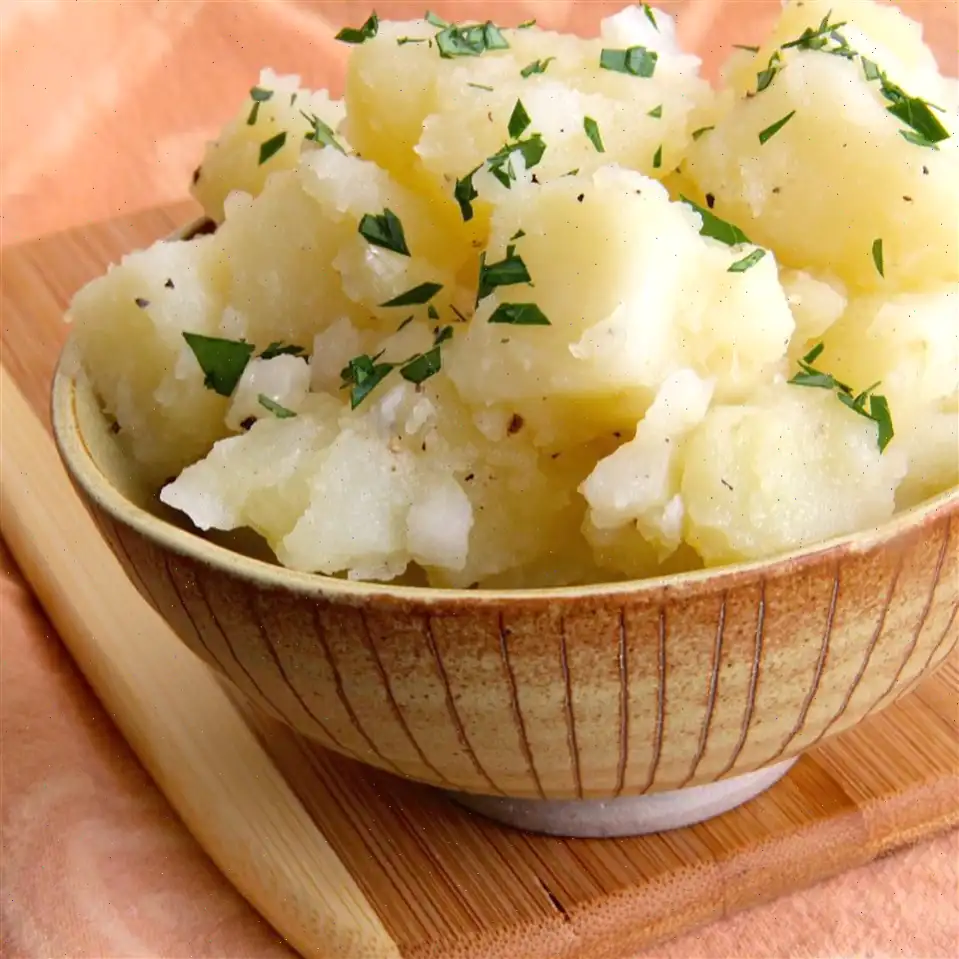
Lemon Tahini Dressing Recipe
This creamy lemon tahini dressing is the perfect addition to salads, roasted veggies, or as a dip. With just a few ingredients, it comes together in minutes and adds a bright, nutty flavor to any dish.
Ingredients
- lemon, juiced
- 3 tablespoons tahini paste
- 2 tablespoons olive oil
- 2 tablespoons water
- 1 clove garlic, roughly chopped
- teaspoon salt
- teaspoon freshly ground black pepper
Directions
- Combine lemon juice, tahini, olive oil, water, garlic, salt, and pepper in a mini food processor or blender.
- Process the mixture until smooth and well combined.
- If the dressing is too thick, add 1 teaspoon of water and blend again. Continue adding water in small increments until you reach your desired consistency.
- Alternatively, you can whisk the ingredients together in a bowl until smooth.
- Store the dressing in an airtight jar in the refrigerator for up to a week.
Nutrition Facts (per serving)
| Calories | 89 |
| Total Fat | 9g |
| Saturated Fat | 1g |
| Cholesterol | 0mg |
| Sodium | 179mg |
| Total Carbohydrates | 3g |
| Dietary Fiber | 1g |
| Total Sugars | 0g |
| Protein | 1g |
| Vitamin C | 7mg |
| Calcium | 14mg |
| Iron | 0mg |
| Potassium | 56mg |
Servings per recipe: 6
Percent Daily Values are based on a 2,000 calorie diet. Your daily values may vary depending on your calorie needs.

This Lemon Tahini Dressing, made with lemon juice, tahini paste, olive oil, garlic, and spices, brings a delightful burst of freshness to any dish. Whether you're drizzling it over a salad, using it as a dip, or adding it to your bowl of roasted vegetables, this dressing packs a creamy, tangy punch that can elevate your meal.
History and Origin
The origins of tahini dressing can be traced back to the Middle East, where tahini paste itself has been a staple for thousands of years. It is a key component of many traditional dishes such as hummus, baba ghanoush, and falafel. The combination of tahini and lemon juice has been used to complement the rich, nutty flavor of sesame seeds, providing a balance of creaminess and tang. The addition of garlic, olive oil, and spices creates a versatile dressing that has found its way into many global cuisines, especially in Mediterranean and Levantine cooking.
Regional Features
This dressing is particularly popular in the Levant, which includes countries like Lebanon, Syria, Jordan, and Israel. In these regions, tahini is often used as a base for sauces and dressings, making it an essential part of the local diet. The Middle Eastern palate, known for balancing bold flavors such as garlic, citrus, and sesame, finds harmony in the lemon tahini dressing, which is used both as a dip for vegetables and as a topping for falafel or shawarma wraps.
How It Differs from Similar Dishes
While tahini is a common ingredient in many Middle Eastern dishes, the Lemon Tahini Dressing stands out due to its unique blend of lemon juice and garlic, which adds a fresh and zesty twist to the typically earthy flavor of tahini. Other tahini-based dressings or sauces, such as tahini sauce used for falafel or hummus, might not feature the same sharpness from lemon, and are often more neutral in flavor, allowing the tahini to take center stage. Additionally, this dressing's consistency can vary depending on the amount of water added, which gives it a more pourable texture compared to thicker tahini pastes or dips.
Where It Is Usually Served
Lemon tahini dressing is commonly served in Mediterranean and Middle Eastern restaurants, often paired with salads, grilled vegetables, and roasted meats. It is especially popular with dishes like falafel, shawarma, and kebabs, where it complements the smoky flavors of grilled food. The dressing also works well as a drizzle over grain bowls, roasted root vegetables, or even as a dip for pita bread and fresh veggies.
Interesting Facts
- Although tahini is primarily associated with the Middle East, it is also a staple in countries like Greece, Turkey, and Armenia.
- Sesame seeds, the key ingredient in tahini, are one of the oldest oilseed crops in history, with evidence of their use dating back over 4,000 years in ancient Mesopotamia.
- Lemon tahini dressing is a popular vegan option because its dairy-free and provides a rich, creamy texture without the use of animal products.
- Tahini is rich in healthy fats, calcium, and antioxidants, making it not only delicious but also nutritious!
Next time you're looking for a versatile, healthy, and easy-to-make dressing, consider whipping up some Lemon Tahini Dressing. Its perfect for adding a burst of flavor to any dish, from simple salads to more elaborate Mediterranean meals!








